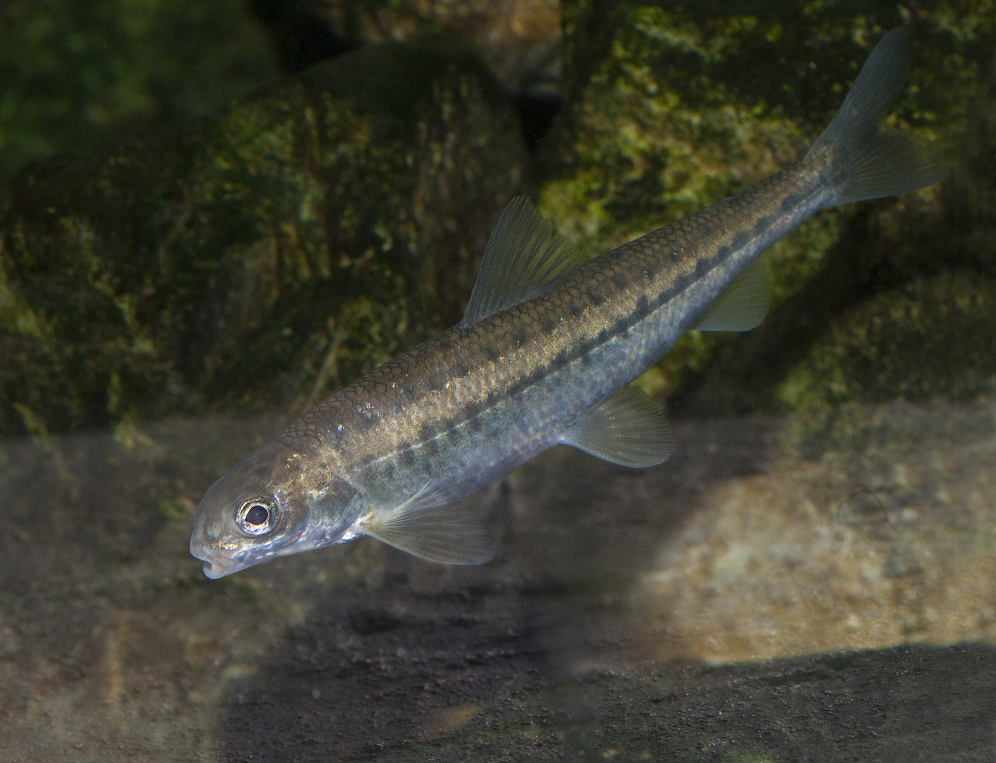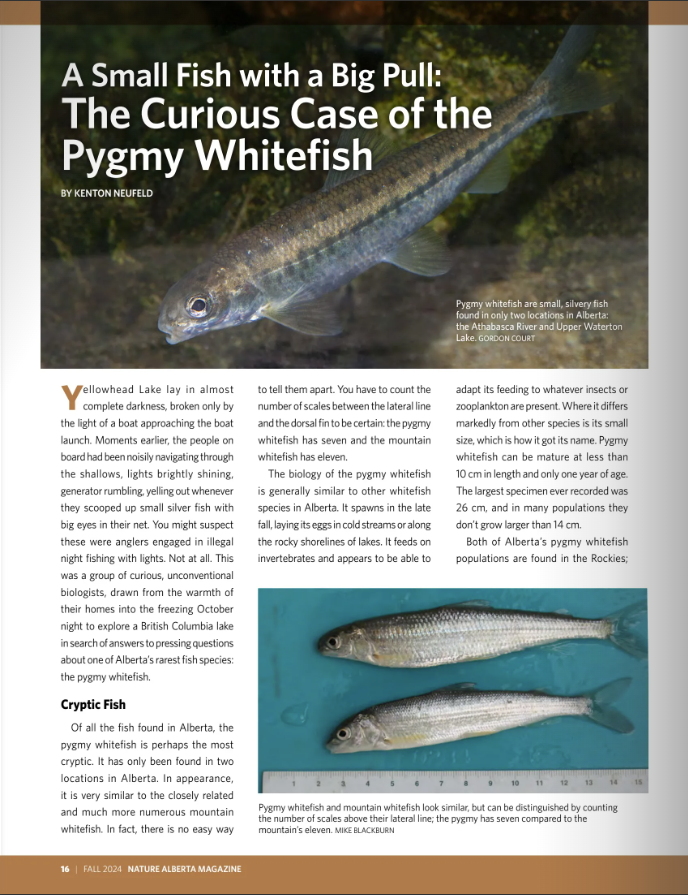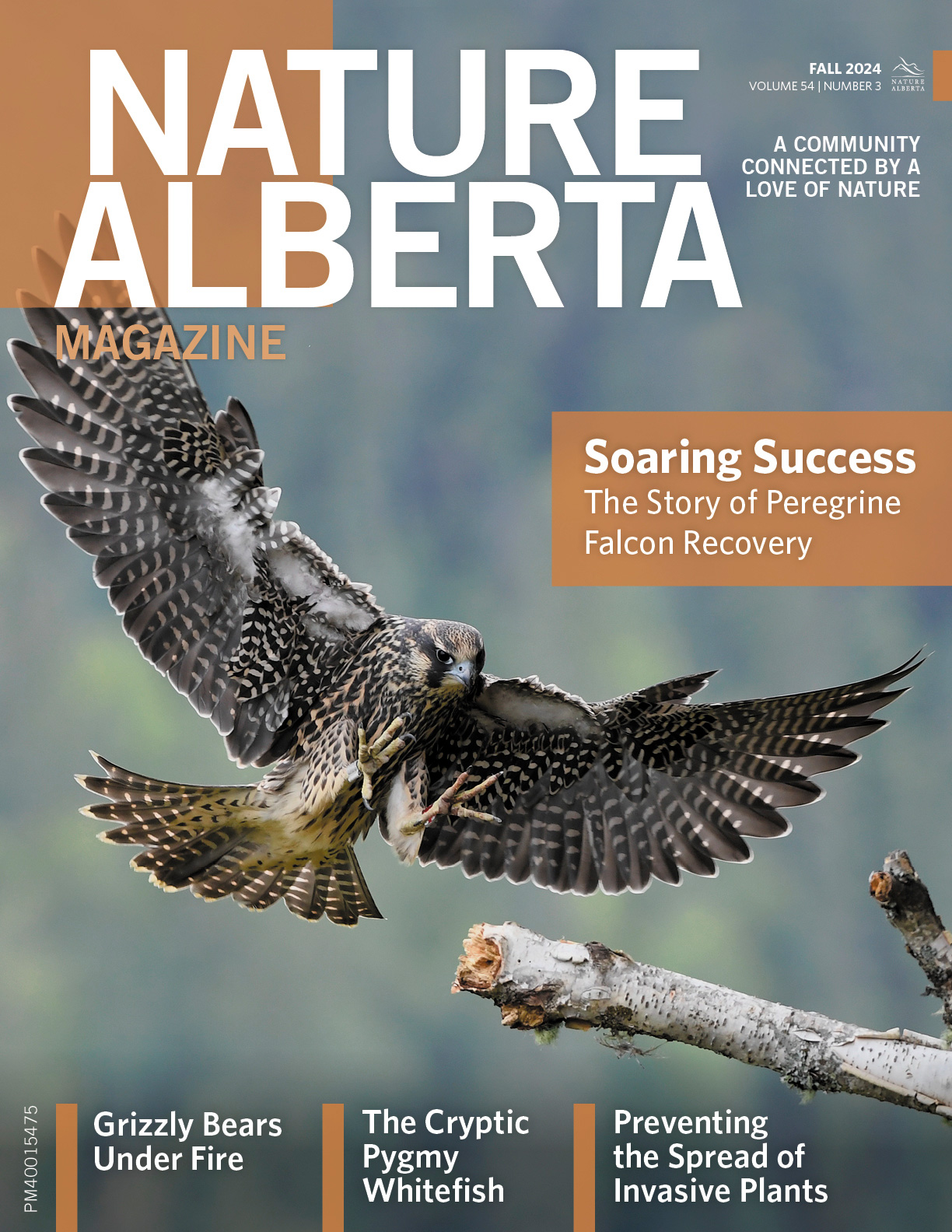A Small Fish with a Big Pull: The Curious Case of the Pygmy Whitefish
18 October 2024

By KENTON NEUFELD
Yellowhead Lake lay in almost complete darkness, broken only by the light of a boat approaching the boat launch. Moments earlier, the people on board had been noisily navigating through the shallows, lights brightly shining, generator rumbling, yelling out whenever they scooped up small silver fish with big eyes in their net. You might suspect these were anglers engaged in illegal night fishing with lights. Not at all. This was a group of curious, unconventional biologists, drawn from the warmth of their homes into the freezing October night to explore a B.C. lake in search of answers to pressing questions about one of Alberta’s rarest fish species: the pygmy whitefish.
Cryptic Fish
Of all the fish found in Alberta, the pygmy whitefish is perhaps the most cryptic. It has only been found in two locations in Alberta. In appearance, it is very similar to the closely related and much more numerous mountain whitefish. In fact, there is no easy way to tell them apart. You have to count the number of scales between the lateral line and the dorsal fin to be certain: the pygmy whitefish has seven and the mountain whitefish has eleven.
The biology of the pygmy whitefish is generally similar to other whitefish species in Alberta. It spawns in the late fall, laying its eggs in cold streams or along the rocky shorelines of lakes. It feeds on invertebrates and appears to be able to adapt its feeding to whatever insects or zooplankton are present. Where it differs markedly from other species is its small size, which is how it got its name. Pygmy whitefish can be mature at less than 10 cm in length and only one year of age. The largest specimen ever recorded was 26 cm, and in many populations they don’t grow larger than 14 cm.
Both of Alberta’s pygmy whitefish populations are found in the Rockies; however, the two sites are separated by hundreds of kilometres. The southern population lives in the deep, cold water of Upper Waterton Lake. The northern population is found in the Athabasca River and some of its tributaries in Jasper National Park. This disjointed distribution is quite unusual in other species, but seems to be common in pygmy whitefish. Most of its populations, which are scattered from Lake Superior to Siberia, are isolated. How they arrived at these locations — and not everywhere in between — is a bit of a mystery, and it’s the question the biologists on Yellowhead Lake were trying to answer.
Yellowhead Lake is located a few kilometres southwest of the Yellowhead Pass within the boundaries of Mount Robson Park in British Columbia. The low pass may have provided a route for pygmy whitefish to make their way from the Fraser River watershed in B.C. to the Athabasca River watershed in Alberta at the end of the last Ice Age. The presence of pygmy whitefish in Yellowhead Lake would lend credence to this hypothesis, which is what motivated the biologists to visit the lake. Up to that time, the presence of the fish in headwaters of the Fraser River watershed had not been confirmed (though the fish is found in other scattered locations in B.C.).
“It was like a treasure hunt,” described Laura Macpherson, a fisheries biologist who was on the Yellowhead Lake sampling trip. The biologists had suspected that pygmy whitefish were present, but weren’t entirely sure. After checking one spot and finding only lake trout, they eventually found a shallow area of the lake that started producing. “We got more than we were anticipating,” said Macpherson, which was a good sign for the sustainability of the population. Their presence in this lake suggests that it may have been the route the fish took to get to the Athabasca. If needed in the future, it could potentially be used as a stocking source to recover that population.
Lingering Mystery
While some information is known about the biology of pygmy whitefish, there are big gaps in our understanding about specific populations. In particular, the Waterton Lake population has had little study compared to the Athabasca River population, and not much is known about its population size, spawning patterns, and feeding habits. It’s a location ripe with opportunities for more investigation.
Since the two Alberta populations are so limited in their distribution and both are located in national parks, there are relatively few immediate threats to their persistence. Still, that small spatial range means that a single event could have a catastrophic impact on a population. A spill of a deleterious substance along the Yellowhead corridor in Jasper, from the highway, railway, or pipeline, could impact that entire population. Because of this vulnerability, it was listed as Threatened in Alberta, and a recovery plan for the species was completed in 2022 (though it’s still waiting for ministerial approval).
The lead author of the recovery plan, Michael Sullivan, and his daughter Sierra (who is also a fisheries scientist) are self-described pygmy whitefish fanatics. They have made several expeditions to sample the species across western Canada. One trip ended with celebratory drinks in a bar in Field, B.C. while still geared up in waders. Another ended with them almost being stranded in Fort Chipewyan for the summer as the ice road conditions deteriorated. The latter trip was to look for pygmy whitefish in Lake Athabasca during the winter; this lake is the most likely location for finding an additional population in Alberta.
The mysteries surrounding pygmy whitefish in Alberta are a testament to their overlooked and cryptic nature. The fact that most sampling trips for the species seem to involve icy mountain rivers, treacherous ice roads, or dark mountain nights speaks to the challenge of exploring the beautiful and remote places where they live. In a province where it sometimes seems like we’ve been everywhere and mapped everything, a hint of mystery is a good thing.
Kenton Neufeld is a fisheries biologist living in Calgary and working in the Eastern Slopes of Alberta, specializing in fish species at risk. He is always on the lookout for new and interesting experiences and stories to share with the public to increase appreciation of Alberta’s aquatic life.
Read the Original Article for this Post
For a richer reading experience, view this article in the professionally designed online magazine with all images and graphs in place.
This article originally ran in the Fall 2024 issue of Nature Alberta Magazine (Vol. 54 | No. 3).


